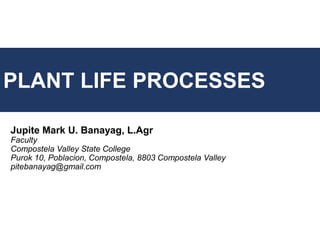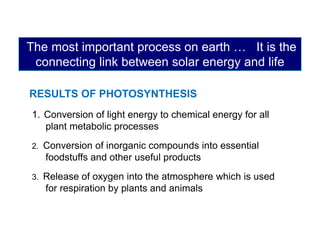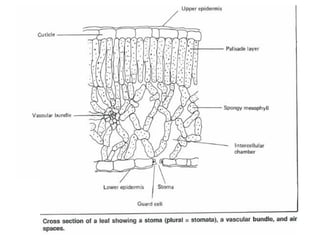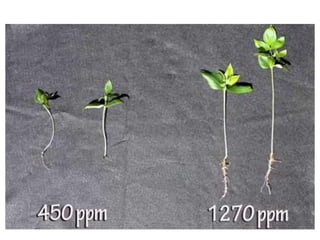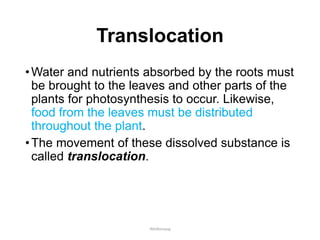The document outlines various plant life processes, emphasizing the distinction between growth, development, and differentiation in plants. It discusses the mechanisms of photosynthesis and respiration, highlighting their significance in plant metabolism, along with the different pathways involved such as C3, C4, and CAM. Additionally, it covers growth phases, growth measurement methods, and the importance of environmental factors in affecting plant growth and reproduction.
